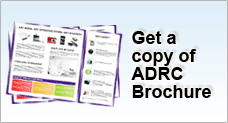 |
 |
 |
Hard Disk Interface(s)
There are a few ways in which a hard disk can connect/interface with:
- (A)dvanced (T)echnology (A)ttachment (Also known as IDE, ATAPI and Parallel ATA)
- (S)erial ATA
- SCSI(aka Scuzzy)
There are variants of each interface, and this article will not do justice to the different types of ATA, SATA and SCSI interfaces. Thus, it will only highlight the more common interfaces as used by the home user.
![]()
ATA (IDE, ATAPI, PATA)
ATA is a common interface used in many personal computers before the emergence of SATA. It is the least expensive of the interfaces.
Disadvantages
- Older ATA adapters will limit transfer rates according to the slower attached device (debatable)
- Only ONE device on the ATA cable is able to read/write at one time
- Limited standard for cable length (up to 18inches/46cm)
Advantages
- Low costs
- Large capacity
![]()
SATA
SATA is basically an advancement of ATA.
Disadvantages
- Slower transfer rates compared to SCSI
- Not supported in older systems without the use of additional components
Advantages
- Low costs
- Large capacity
- Faster transfer rates compared to ATA (difference is marginal at times though)
- Smaller cables for better heat dissipation
![]()
SCSI
SCSI is commonly used in servers, and more in industrial applications than home uses.
Disadvantages
- Costs
- Not widely supported
- Many, many different kinds of SCSI interfaces
- SCSI drives have a higher RPM, creating more noise and heat
Advantages
- Faster
- Wide range of applications
- Better scalability and flexibility in Arrays (RAID)
- Backward compatible with older SCSI devices
- Better for storing and moving large amounts of data
- Tailor made for 24/7 operations
- Reliability


